At What Age Should You Consider a Hair Transplant?

Sommaire
Have you noticed your once full head of hair gradually thinning? Perhaps you’ve wondered whether it’s time to consider a hair transplant. This seemingly straightforward question actually raises a number of complex issues. What’s the right age for a hair transplant? Is one ever too young or too old to take the plunge?
Understanding Age-Related Hair Loss
Androgenetic alopecia, the most common form of baldness, affects around 50% of men over the age of 50 and can start as early as their twenties. In women, it affects 40% of those over 70. This phenomenon results from a genetic sensitivity of the hair follicles to dihydrotestosterone (DHT), derived from testosterone. Over time, the sensitive follicles become smaller, producing increasingly thinner hair until they stop producing altogether.
The Norwood-Hamilton scale classifies the development of male pattern baldness into 7 stages:
- Stage 1: No visible receding hairline (20-30 years)
- Stage 2: Slight temporal receding hairline (25-35 years)
- Stage 3: Pronounced recession of the temporal gulfs (30-40 years)
- Stage 4: Appearance of a bald area on the crown (35-45 years)
- Stage 5: Junction between the frontal area and the crown (40-50 years)
- Stages 6-7: Extension of the bald area (aged 50 and over)

However, this progression varies considerably from one individual to another. Factors such as genetics, hormones, stress and nutritional deficiencies can accelerate the process.
The ‘stabilisation’ of hair loss, i.e. when hair loss slows down and the final extent of baldness can be predicted, plays a key role. Waiting until this phase allows the surgeon to plan a more precise operation and obtain results that will remain natural.
Am I Too Young for a Hair Transplant?
An operation carried out too early, generally between the ages of 18 and 25, can lead to unpredictable progression of alopecia, unsightly long-term results and premature exhaustion of the donor area. If carried out too early, it will often be necessary to carry out several hair transplants over the course of one’s life.
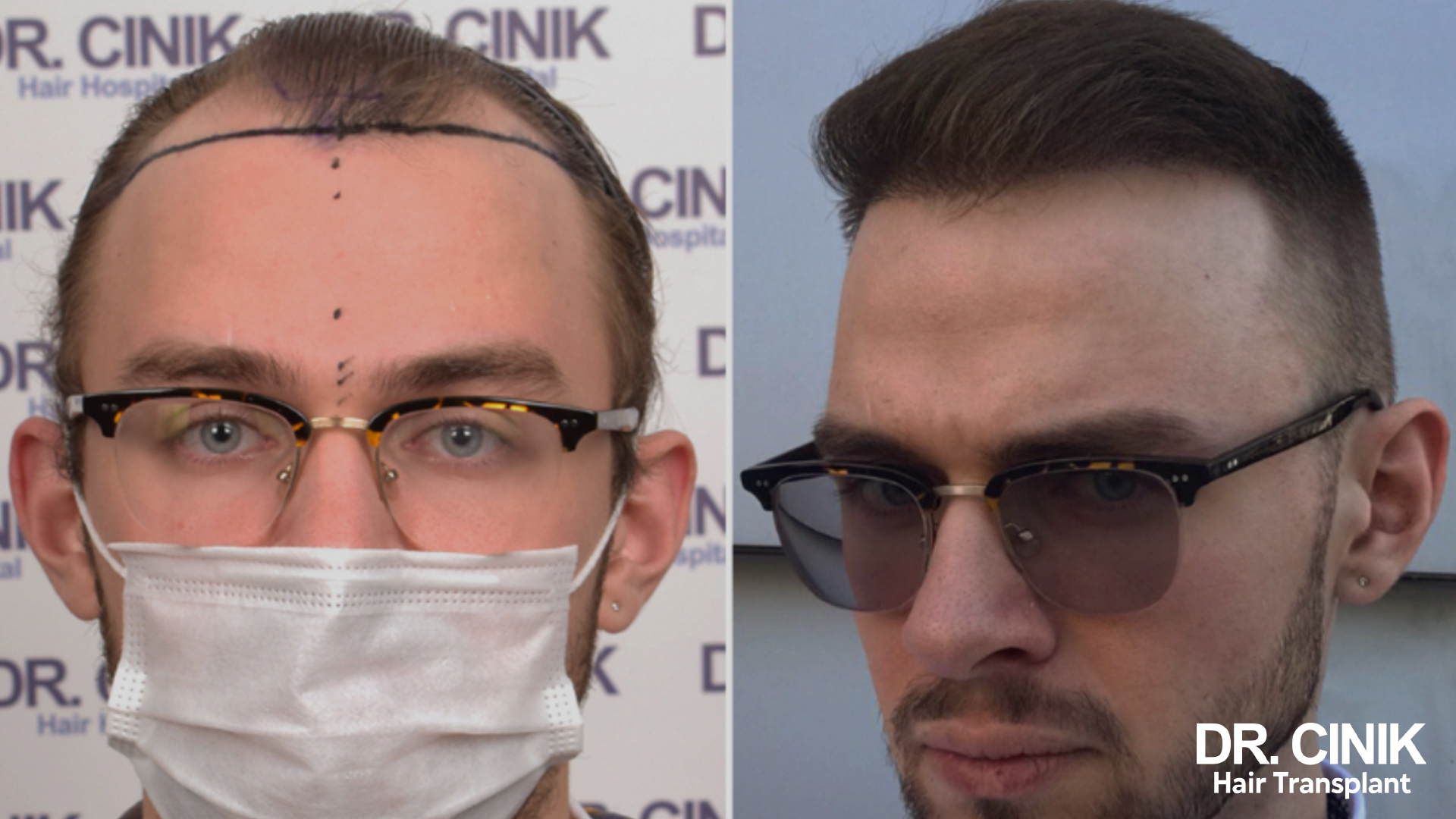
Waiting for hair loss to stabilise has real advantages. This period allows you to observe how your baldness is progressing, to try out other potentially effective treatments, and to adjust your expectations. This way, when you consider a transplant, you’ll be better prepared and informed, increasing the chances of a satisfactory long-term result.
Young patients can consider alternatives such as:
- Medical treatments (finasteride, minoxidil)
- Non-surgical techniques (mesotherapy, PRP)
- A preventive approach based on hair hygiene and diet
In certain exceptional cases, such as very advanced and stabilised hair loss or a major psychological impact, a transplant may be considered for a young patient. However, a thorough assessment with Dr Cinik is necessary to carefully weigh up the potential benefits and risks.
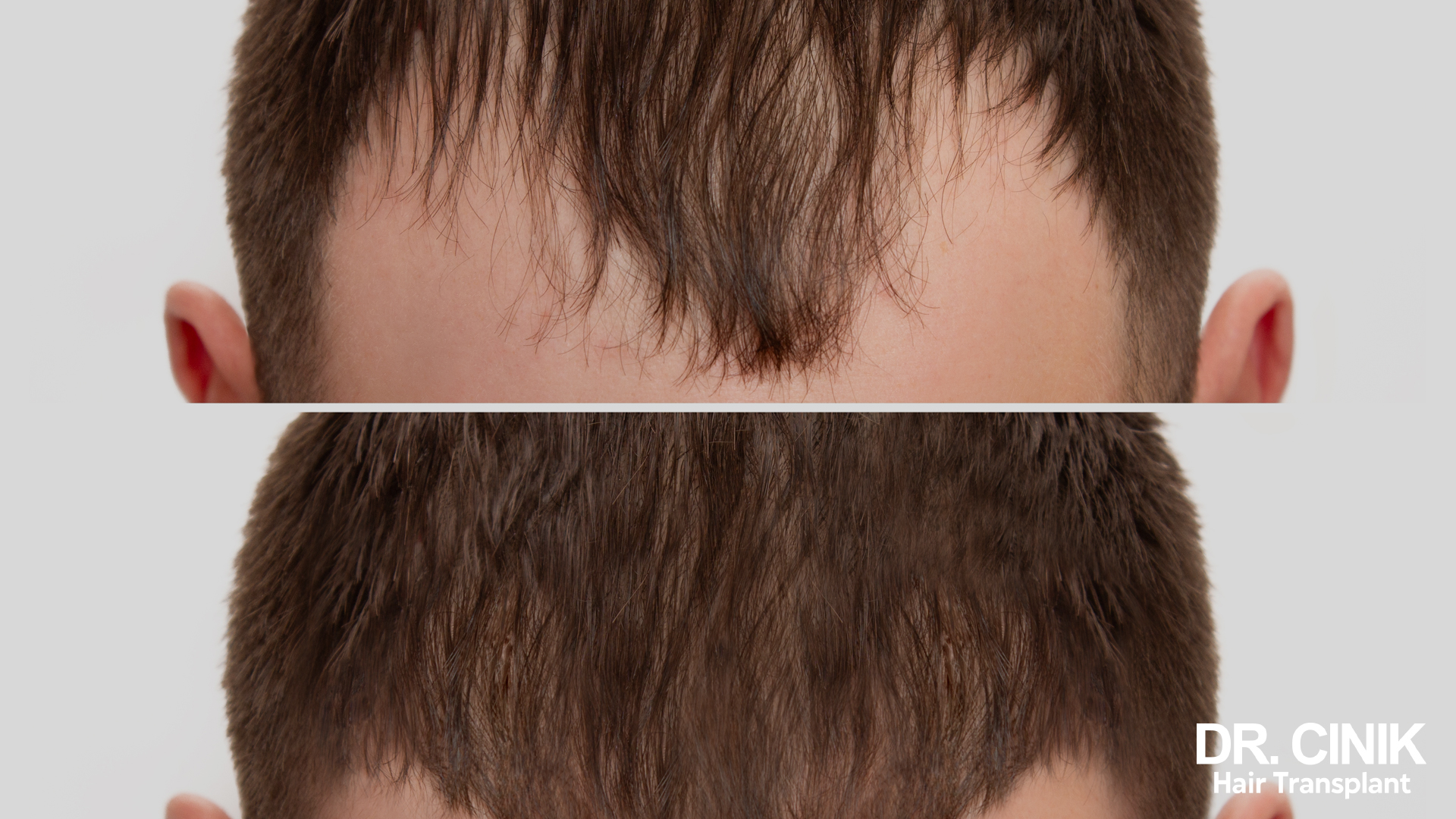
25 to 40 is the Ideal Age Range for a Hair Transplant
The period between the ages of 25 and 40 is generally considered ideal for a hair transplant. At this age, hair loss tends to stabilise, you have a better idea of the future extent of your baldness, and your hormones are more balanced, which favours more predictable results.
However, each case is unique. The right age for a hair transplant varies according to a number of factors: the speed of your hair loss, the quality of your donor area, your aesthetic expectations, your overall health and even your lifestyle. That’s why a diagnosis is needed to determine the best time for you.
For example, a 28-year-old man with rapid but stabilised loss could be a good candidate, while a 35-year-old patient with slow loss could wait a few more years. Dr Cinik stresses the importance of a personalised approach rather than relying solely on chronological age.
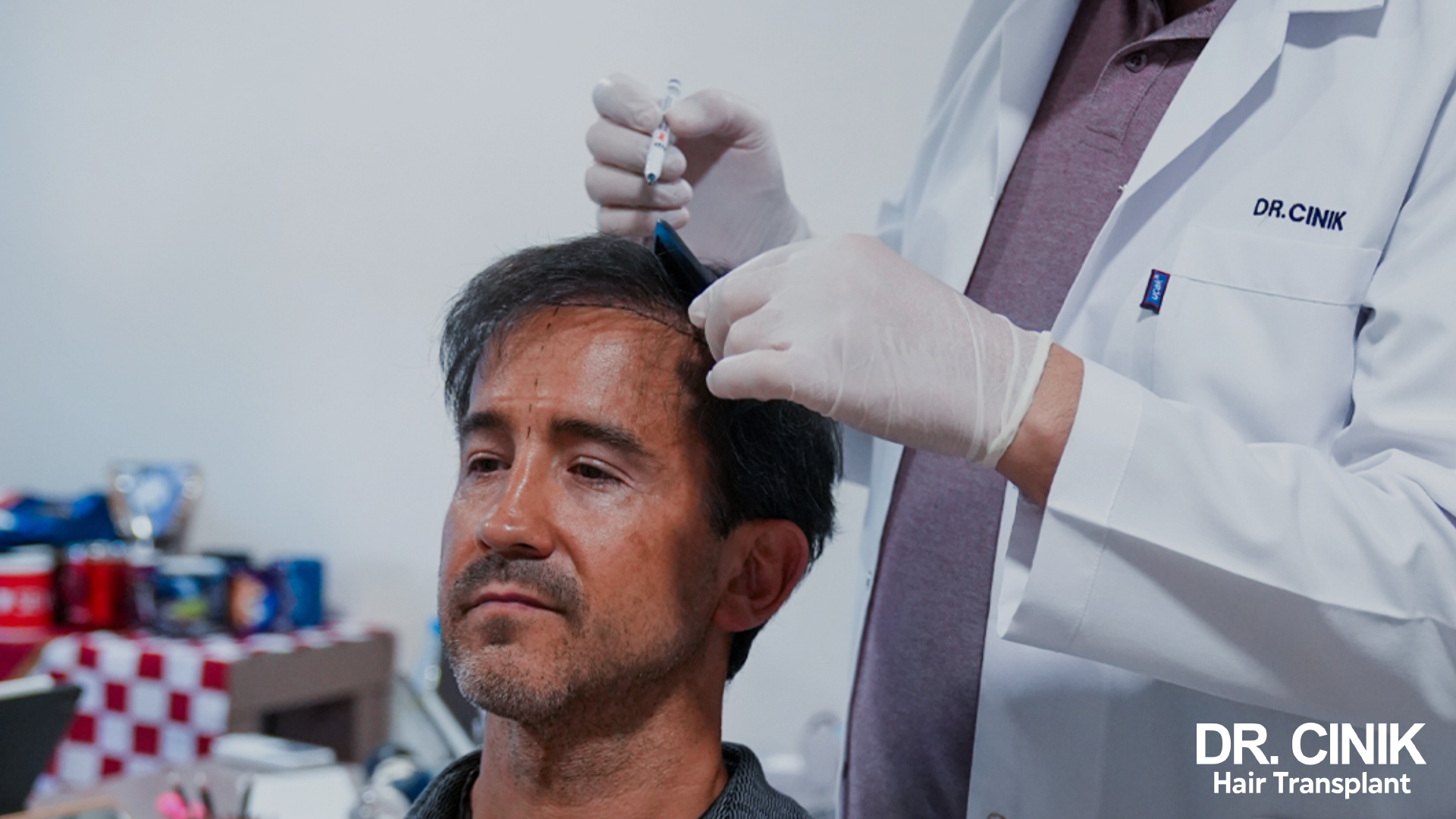
Am I Too Old for a Hair Transplant?
Contrary to popular belief, there really is no age limit for considering a hair transplant. Many patients over the age of 50 achieve excellent results. However, certain specific factors come into play with age.
The quality of the scalp and the density of the donor area can change over the years. Dr Cinik assesses these parameters precisely to determine the feasibility of a transplant. Paradoxically, there are some advantages to transplanting at an older age:
- The pattern of hair loss is generally stabilised, making planning easier
- Patients often have more realistic expectations
- The impact on quality of life and self-confidence can be significant
Modern techniques such as FUE Sapphire and DHI, mastered by Dr Cinik, give excellent results even on mature scalps. However, the general state of health, the use of certain medications and the quality of the scalp skin are factors to be taken into account. Dr Cinik tailors his technique and recommendations to your specific profile, following a thorough medical assessment.
For older patients, the goal will often be to improve overall appearance rather than aiming for maximum density. Dr Cinik discusses in detail the realistic results you can expect, taking into account your unique situation.
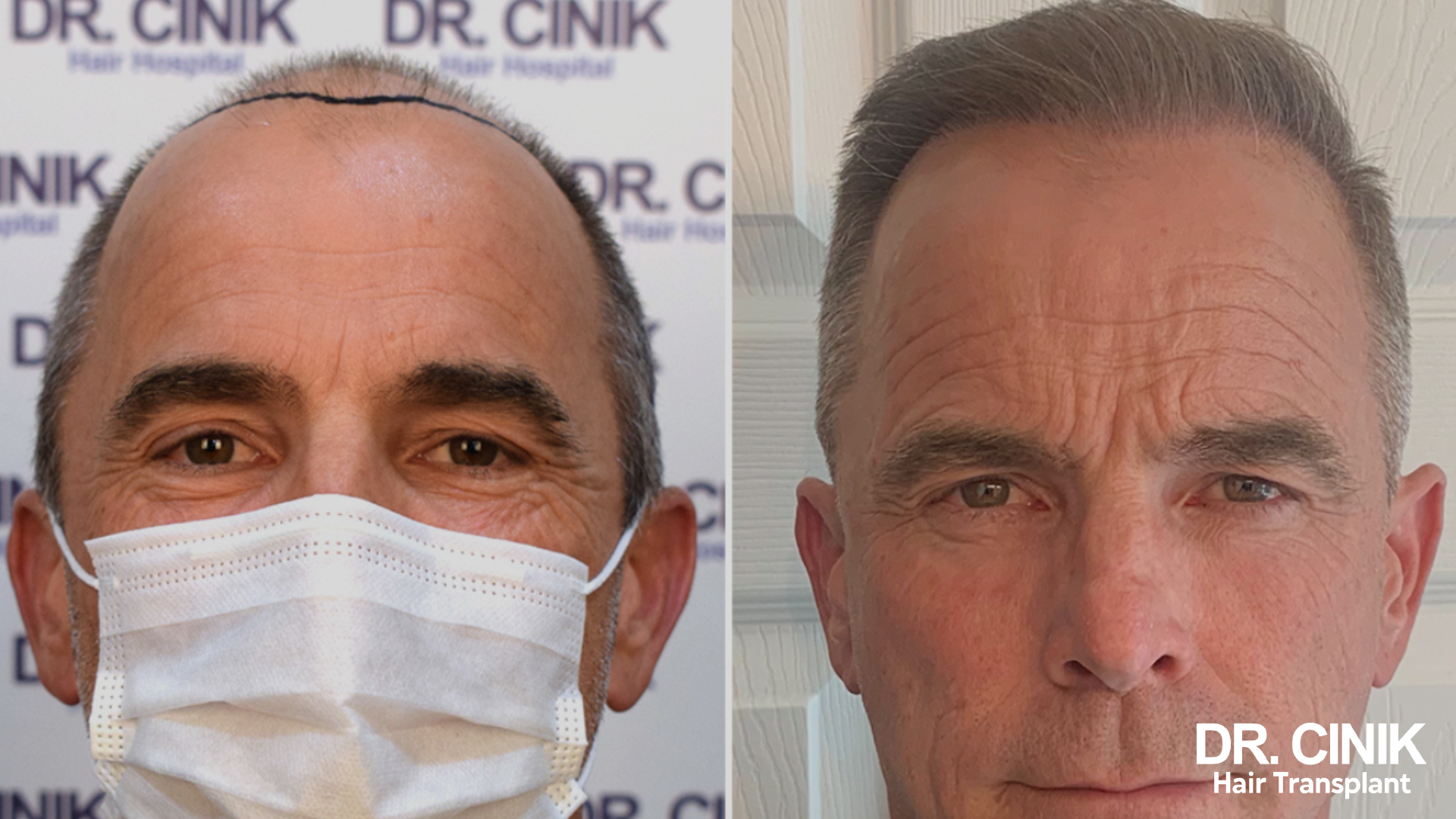
Results and Expectations by Age
Age does influence the results of a hair transplant, but modern techniques make it possible to achieve excellent results at any age. The rate of growth and the quality of the grafts vary: younger patients generally experience rapid, vigorous regrowth, while in older patients growth may be a little slower but still satisfactory.
The density that can be achieved depends on age and the quality of the donor area. Between the ages of 20 and 40, high density is often possible. Between the ages of 40 and 60, we aim for moderate to high density, depending on the quality of the donor. Over the age of 60, the aim is generally moderate density for a natural effect.
Transplanted hair retains the characteristics of the donor area. As they age, they may naturally become finer or greyer, blending in with the existing hair. Dr Cinik uses state-of-the-art techniques such as Sapphire FUE and DHI to optimise results at any age, allowing precise and minimally invasive implantation.
The psychological impact of the results also varies. Younger patients need to prepare for the potential progression of their hair loss, while older patients often appreciate the rejuvenating effect even with moderate improvement.
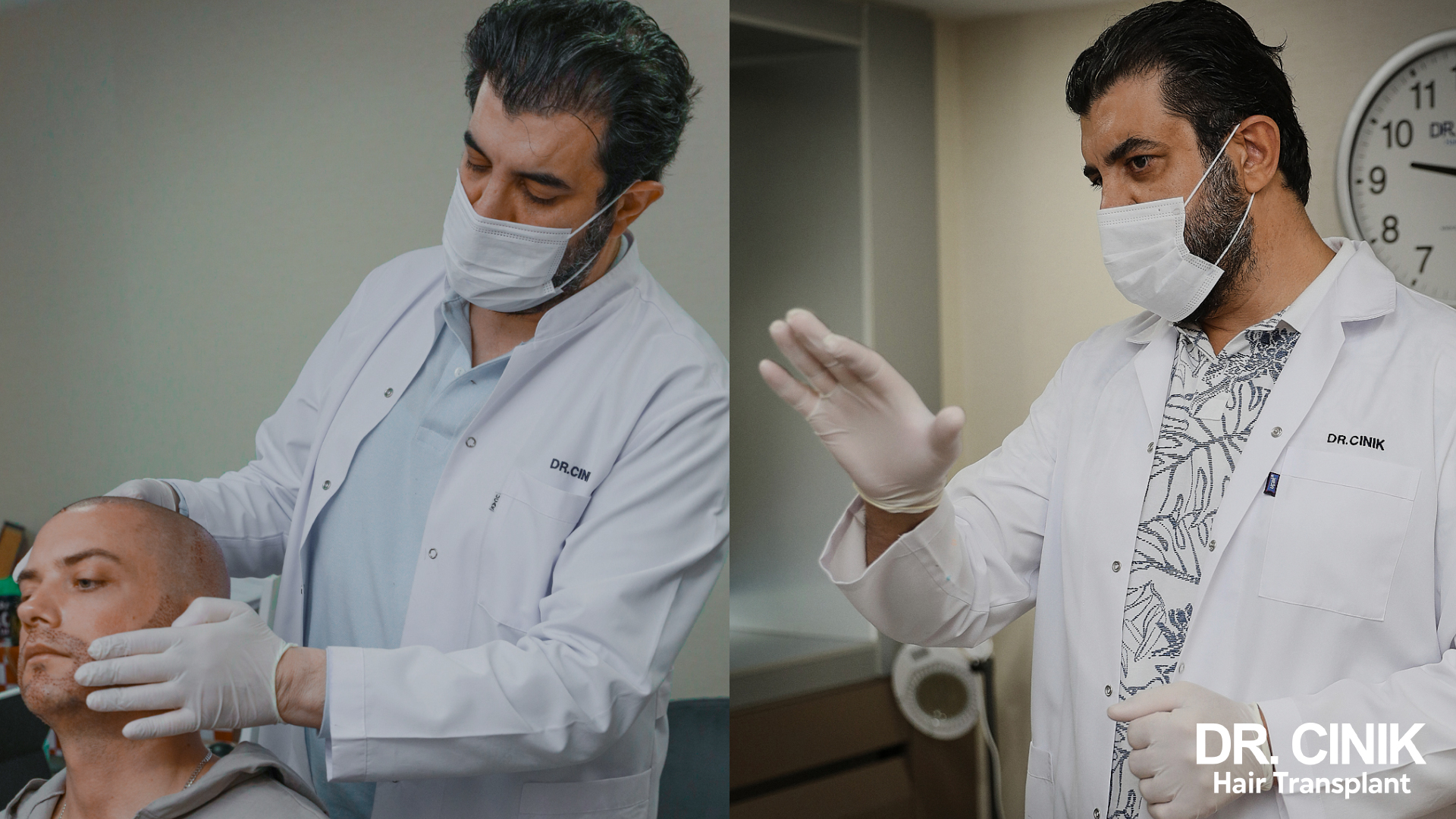
The Importance of Long-Term Follow-up
Regular follow-up after your hair transplant is crucial, whatever your age. These appointments allow Dr Cinik to monitor the progress of your hair and intervene quickly if necessary. For younger patients, this follow-up is particularly important because their hair loss may still be progressing. Dr Cinik can adjust your treatment, recommend additional care or consider other interventions to maintain optimal results over time. This personalised care ensures that your new hair remains beautiful and natural-looking for many years to come.
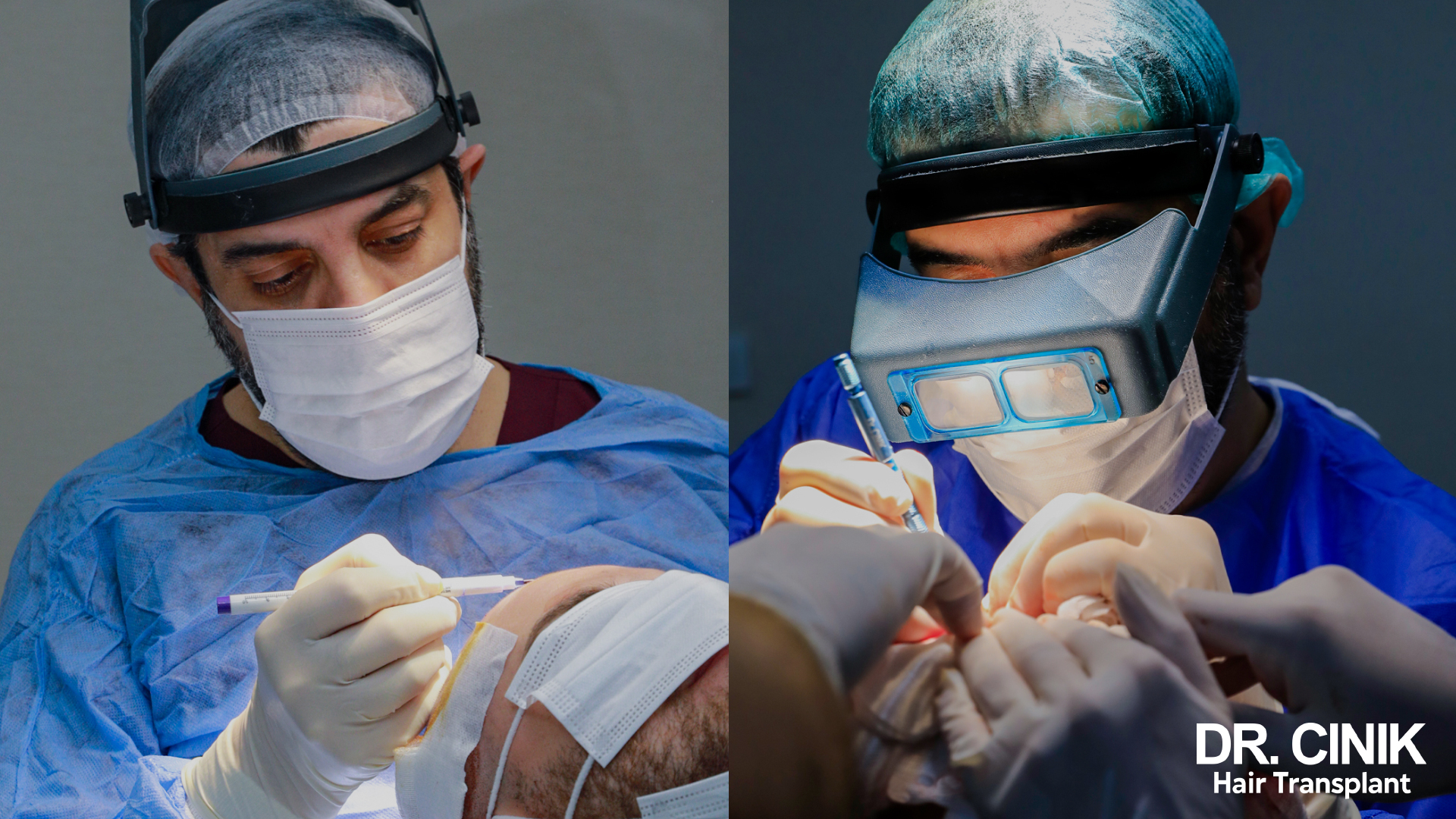
Overview of Modern Grafting Techniques
Dr Cinik specialises in the most advanced grafting techniques, suitable for all ages. Sapphire FUE allows individual follicles to be extracted with maximum precision, while DHI (Direct Hair Implantation) offers implantation without prior incision.
These minimally invasive methods guarantee natural results and a rapid recovery, whatever your age. During your consultation, Dr Cinik will explain in detail which technique is best suited to your particular situation.
Conclusion
The ‘right’ age for a hair transplant isn’t set in stone. Each situation requires a personalised assessment. Whether you’re young and concerned about early hair loss, or older and unsure about whether to have a transplant, there are solutions.
Modern hair transplant techniques, mastered by Dr Cinik, offer remarkable possibilities at any age. The most important thing is to consult a specialist for an in-depth assessment of your situation.
Don’t hesitate to make an appointment with Dr Cinik to discuss your options and determine whether a hair transplant is right for you. After all, it’s not just about finding the right age for a hair transplant, but finding the right time for you.



